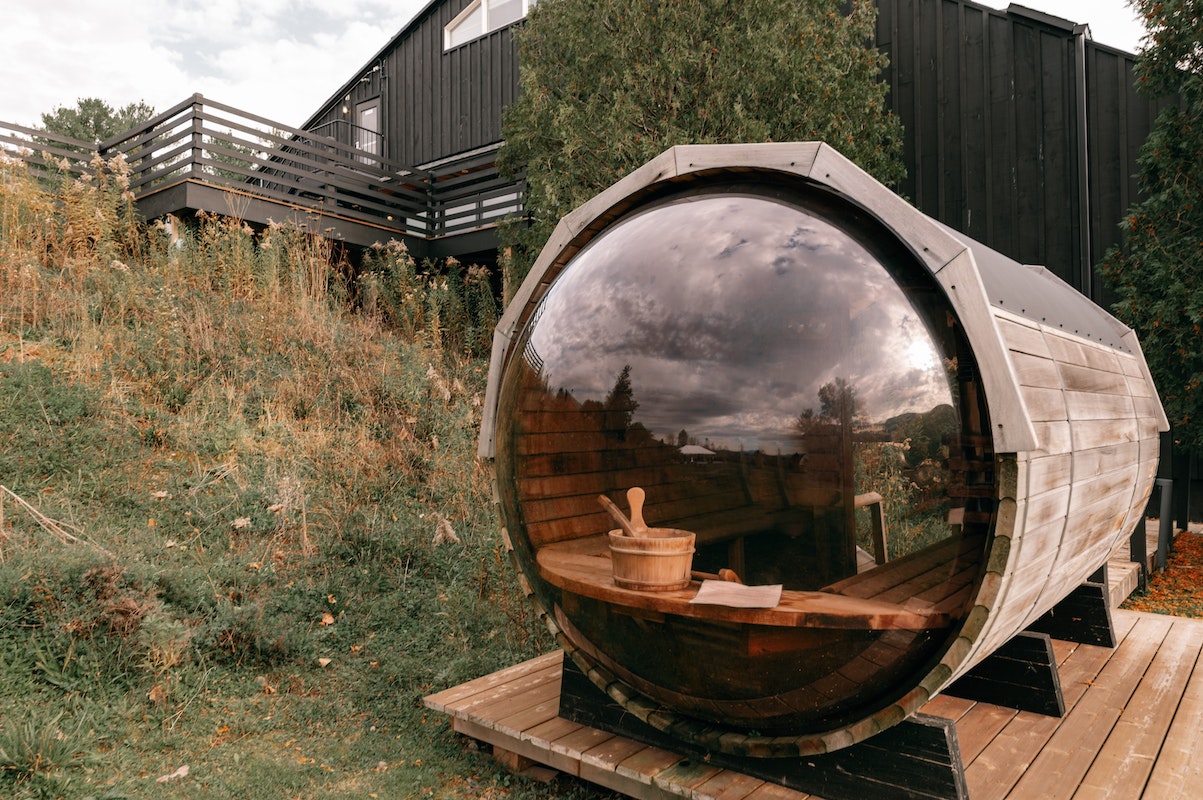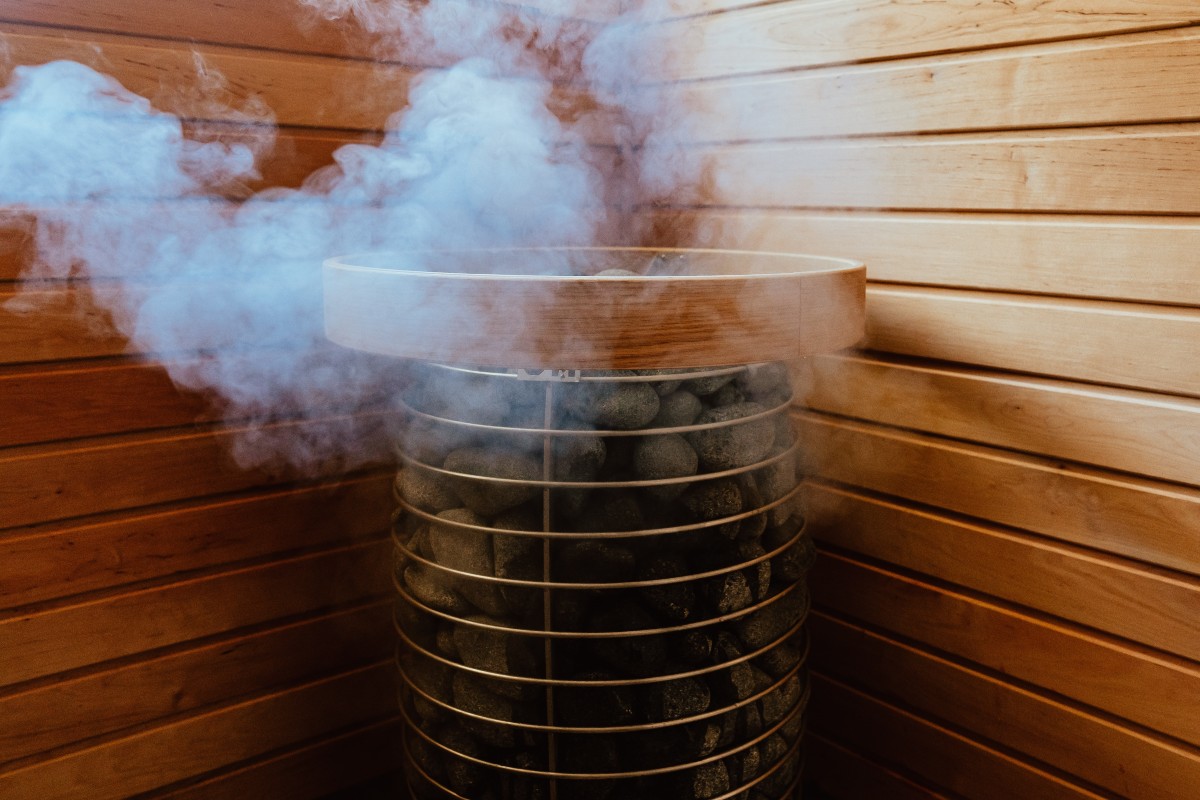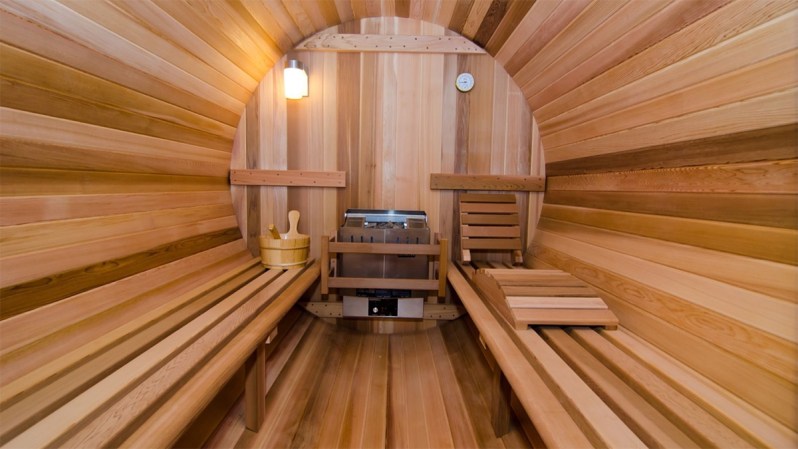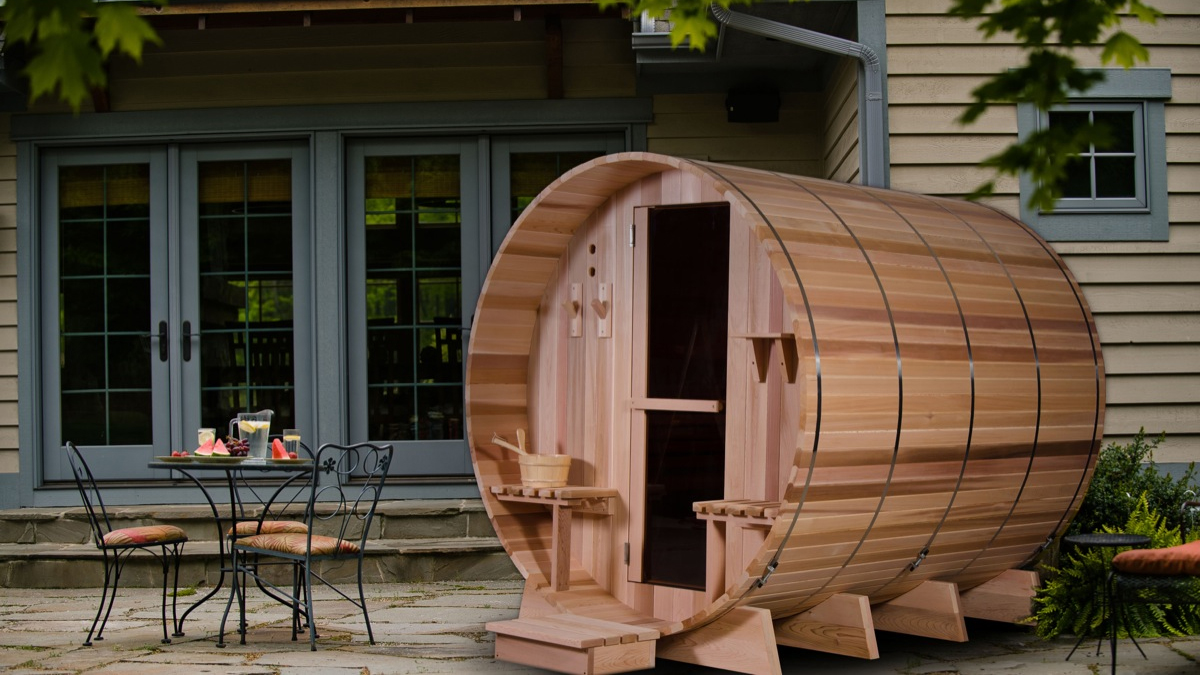The sauna likely originated two centuries ago in Finland as a way for field workers to relax and ease sore muscles.
Saunas at health clubs and spas remain popular today for the same uses — plus purported weight loss benefits. Hitting a sauna isn’t exactly a fly-by-night or questionable wellness trend, like supplements or fad diets.
However, true sauna enthusiasts have found a way to bring the experience to their backyards in a stylish fashion. Barrel saunas are like small cabins mixed with wine barrels and spas. They quite literally look like a wine barrel on the outside but have a spacious interior and heat up like a sauna. The design was also inspired by the Finnish.
Nordic countries have a reputation for being healthier and happier. Is there something to these barrel saunas? Here’s what to know before you splurge on one.
What is a barrel sauna?
A barrel sauna brings the spa and health club experience to the comfort and privacy of your own backyard. It’s a curved, cylindrical-shaped structure made of wood. Your neighbors may actually think you’re producing wine or whiskey because the shape resembles one of the barrels used for that purpose.
What are the benefits of a barrel sauna?
They look and sound cool. But why would you bring a barrel sauna into your backyard when you can simply go to your local spa? The latter is an excuse to escape your home and doesn’t require assembly.
Proponents of the barrel sauna say it elevates your self-care.
It heats up faster
You can fit a circle into a square but not the other way around. Therefore, a square sauna has unused space that a heater has to heat. With a sauna, the cylindrical design lacks the hard angles of a square sauna room and less unused air space. As a result, it supposedly heats faster and more efficiently. That said, a barrel sauna typically takes about 45 minutes to reach optimal temperature. Square saunas also reportedly take the same amount of time.
The design promotes a more efficient heat distribution
You probably know that heat rises. In a square sauna, it gets trapped there, making the parts of the room lower to the floor cooler. The curved design of a barrel sauna might allow for a more even distribution of the heat, so your height won’t matter as much.
It brings spa-like self-care to your backyard
Perhaps the only tangible, verifiable benefit: Barrel saunas allow you to get TLC on your own time and terms. You’re not limited by appointment times or a local spa’s business hours. If you have a third-shift schedule, your barrel sauna will be there for you when you need it. If nothing else, it serves as a cool — albeit pricy — conversation starter.

What are the drawbacks of a barrel sauna?
Barrel saunas aren’t for everyone, and you’ll want to keep some considerations in mind before allowing one to set up shop in your garden.
- Lack of insulation. The wooden walls are not insulated and lack a vapor barrier. A barrel sauna may not be that warm and cozy if you live in a colder area or one with a true winter.
- Maintenance is required. At a spa or health club, the staff is responsible for upkeep. Leaks aren’t your problem. With your very own barrel sauna, they are. Mother Nature can also cause leaks, wear, and tear. Do you know how people say boats are money pits? You can argue a barrel sauna is, too.
- Cost. How much does a barrel sauna cost? It depends on the material and where you’re looking. Generally, you can find barrel saunas for anywhere from $3,500 to $6,000 or more. You can find barrel saunas through retailers like Fordano and Wayfair.
What are the different types of barrel saunas?
Barrel saunas aren’t simply made of any old wood. You’ll typically find three main types:
- Cedar: Cedar is known for its durability and sustainability. It’s less likely to decay or rot and is considered the most energy-efficient. Not everyone likes the aroma.
- Nordic spruce: These light barrel saunas are easy on the eyes. The aromas typically aren’t too fragrant. However, you may notice more knots in the wood or that it seeps sap.
- Pine: These barrel saunas typically have the lowest price but come with the most problems. They’re not as durable. The aesthetic is relative, but most people don’t find fir barrel saunas very sightly.

Should I get a barrel sauna?
That’s up to you. If you like the idea and can fit one in your backyard, give it a shot. A barrel sauna can help you relax without leaving your home. The curved design reportedly allows it to heat faster, but that’s debatable. Regardless, barrel saunas may look stylish — like a gigantic wine barrel — and fun.
Of course, it’s not without its drawbacks. They aren’t insulated, are expensive (over $6,000 sometimes), and require maintenance. Researching materials and additional costs, such as maintenance, is a good idea. Consider where you live and when you’ll want to use it. Because they are not insulated, barrel saunas get rather chilly in the winter in some areas of the U.S. Don’t expect them to feel warm and snug, even with a heater on blast.






